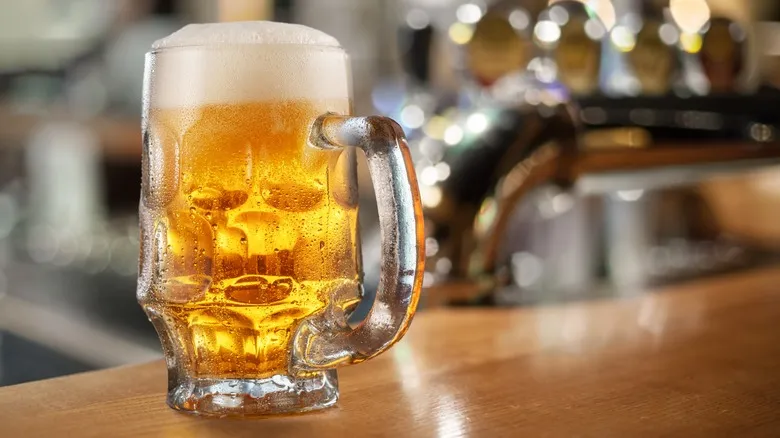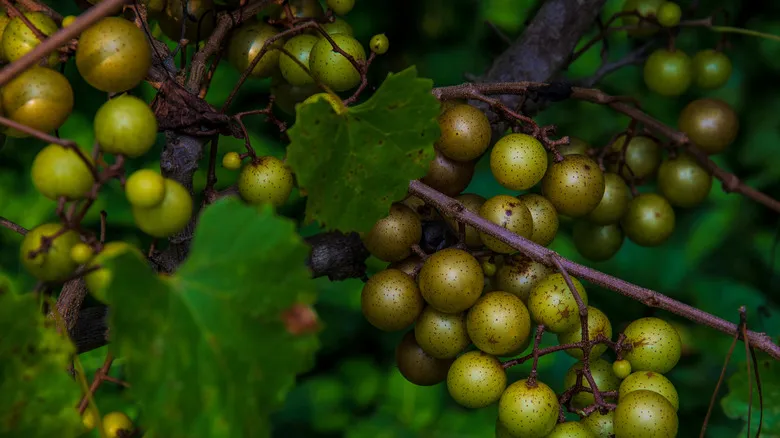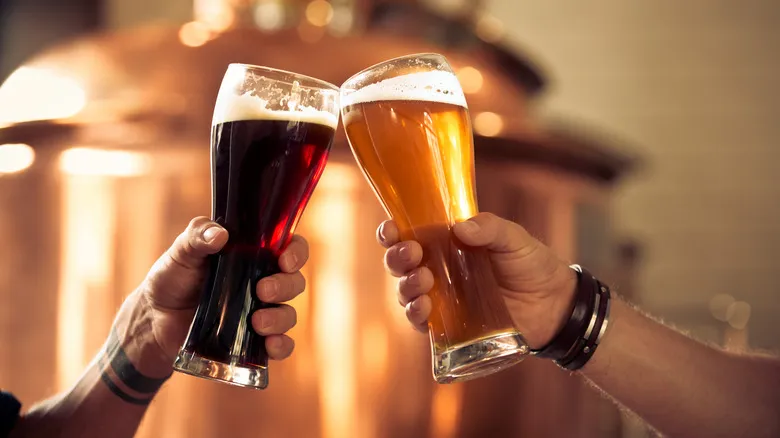Ales are top-fermented and brewed warm

When discussing "which type of beer originated first," the clear answer is ale. Humans have been creating fermented barley beverages since ancient Mesopotamia, although those early recipes were quite thick and resembled a sludgy soup more than a drink. The modern concept of beer is believed to have emerged in Europe around 800 B.C., when brewers started incorporating hops (the flowers of the Humulus lupulus plant) as a key ingredient. Much of this beer was produced at warmer temperatures, and during fermentation, the thick yeast would rise to the surface. After skimming it off, the resulting drink would be recognizable as beer.
Ales come in a wide range of varieties, including amber ales, brown ales, stouts, saisons, pale ales, and many others. You may also be familiar with the term "IPA," or India Pale Ale. Unlike pale ales, IPAs contain a higher quantity of hops, which contribute significantly to a beer's flavor. This results in a more intense and bitter profile, making them a favorite among craft beer enthusiasts who appreciate that taste. Common examples of ales you might find on store shelves include American pale ales like Sierra Nevada or Dale's Pale Ale, as well as wheat ales like Blue Moon.
Lagers are bottom-fermented and brewed cold

If the average person is looking for a "regular beer," they will likely end up with a lager. Although lagers are significantly more popular than ales today—accounting for about 87% of beer sales, which includes most domestic options found in convenience stores—they were actually developed more recently. Lagers originated in Germany during the 15th century; they were brewed at low temperatures, often in caves, and the yeast used sank to the bottom of the fermentation tank rather than floating on the surface.
Many lagers are refreshing and easy to enjoy, typically featuring lighter varieties with lower alcohol content. This category includes top-selling beers like Bud Light and Heineken, as well as well-known Mexican lagers such as Pacifico and Corona. Pilsners, a style of pale lager that emerged in what is now the Czech Republic, are also frequently seen on tap: examples include Modelo, Carlsberg, and Pilsner Urquell, named after the brewery that pioneered the style. Unsurprisingly, many Oktoberfest beers are lagers, as this style hails from Germany, often appearing as Märzens (amber lagers) or festbiers (golden, maltier lagers). If you're introducing someone to beer, starting with a pale lager might be a good choice before progressing to more robust flavors.
Brewing lagers and ales

The brewing process for both ales and lagers follows a similar sequence: Grains, such as barley, are converted into malts, which are then mashed and heated. The liquid extracted during this process, known as wort, undergoes fermentation. This is the stage where yeast is introduced, and the process diverges based on the type of yeast used. Yeast, a living organism, plays a vital role in fermentation, as it is the yeast microbes that transform sugars into alcohol.
Ales are produced using top-fermenting Saccharomyces cerevisiae yeast and are typically fermented in tanks at temperatures between 60 and 78 degrees Fahrenheit. They generally take about a week or slightly more to ferment, making them a more accessible option for homebrewers due to the shorter fermentation period at room temperature. In contrast, lagers are brewed with bottom-fermenting Saccharomyces uvarum yeast and are usually fermented at temperatures ranging from 45 to 58 degrees Fahrenheit for several weeks or even longer. After fermentation, lagers often undergo an additional maturation phase, where they are stored in kegs at near-freezing temperatures for months or more, a process known as "lagering."
While ales tend to exhibit fruity flavors due to the top fermentation process allowing for the development of more aromatic compounds, there is a wide variety within both beer types. So, feel free to experiment and find what you enjoy, all while drinking responsibly.
Recommended

How To Open Sparkling Wine Like A Sommelier

Why Scuppernong Wine Is A North Carolina Favorite

How To Transform Leftover Wine Into Red Wine Vinegar

How To Make Sangria - You're Doing It All Wrong
Next up





